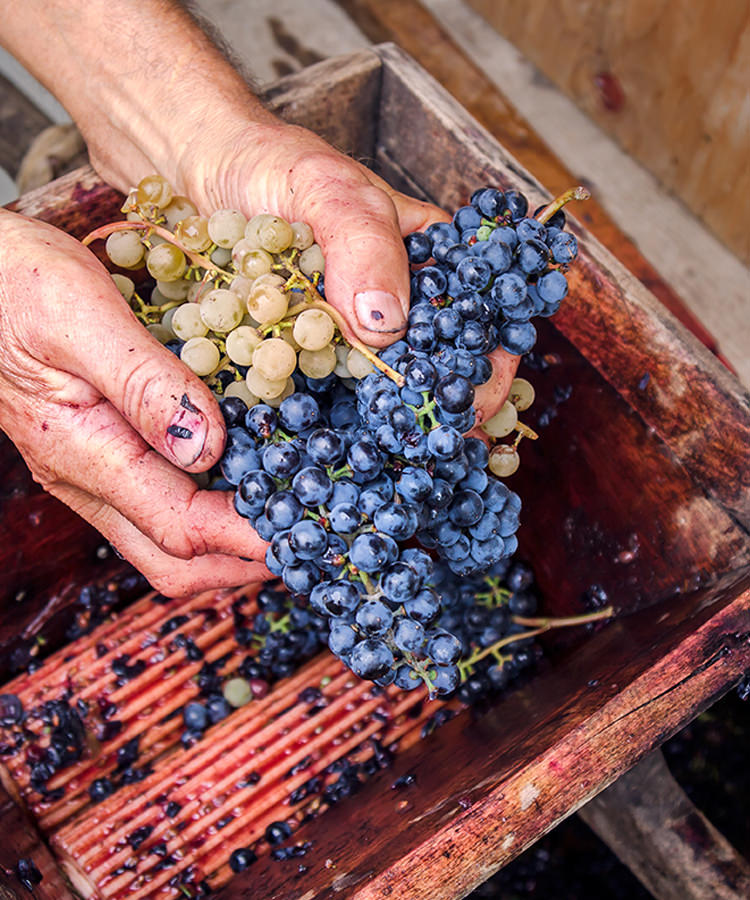There are certain truths wine drinkers hold self-evident. We know, for example, that every wine is either a varietal bottling or a blend. (The difference there is simple. Varietal wines consist of one single grape variety, while blends are comprised of multiple types of grapes.) Regions like Burgundy are known for their single-varietal bottles, whereas other areas, such as Bordeaux, are renowned for world-class blends.
You’ve probably also seen the term ‘field blend’ somewhere along the shelves of your local wine shop. So what exactly does that mean?
As with all blends, field blends are a combination of multiple grape varieties. What sets a field blend apart is the way the blend is vinified. Generally, conventional blends take different plots of single grape varieties, vinify them separately, and blend them at the end of the winemaking process.
With field blends, however, different grape varieties are grown in the same plot, and then harvested and vinified together. This practice is common all over the world, particularly in Portugal, Italy, and Northern California.
Greece’s Rapsani PDO, one of four protected designated wine regions in the country, is entirely dedicated to the craft of traditional field blending. By law its wines are comprised of equal parts Xinomavro, Krassato, and Stavroto, and have been for more than 200 years. The protected Rapsani appellation, established in 1971, states that grapes must be co-vinified in all steps of the process. Although some of the region’s newer winemakers do have separately planted, single-variety vineyards, only co-vinified blends may be labeled under the appellation.
At first glance, co-vinification sounds like a fairly easy approach to wine blending. You grow a bunch of grapes together, pick them all, and vinify them as you would a single variety, right?
Not so fast. Co-vinifying actually presents a number of hurdles because different grapes have different needs. Pick too early, and you risk your blend being too green. Pick too late, and your final field blend could end up overripe and flabby. When it comes to field blends, finding that sweet spot is key.
“It is a great challenge for the vine grower and winemaker [to co-vinify],” Panagiotis Zisiadis, a marketing manager for Greece’s TSANTALI Vineyards, says. “They have to decide the best average time when the three varieties are in their best possible shape for harvest. The three varieties may not have the same ripening cycle, so this is a very crucial decision for the winemaker to make.”
At TSANTALI, field blends are hand-harvested at the decided time, with varieties identifiable by their unique leaf structures and grape shapes. Blends are generally kept the same throughout the years, though slight vintage variation is to be expected. “In Rapsani, the tradition was about one-third of each variety in the blended field,” Zisiadis says. “We want to safeguard this tradition.” Because Xinomavro is such a powerful grape, the balance with Krassato and Stavroto is crucial. Without it, Zisiadis says, Rapsani wines would resemble the “Xinomavro-based wines we find in other regions.”
So why should you choose a field blend over a conventional blend? “A field blend is a beautiful tradition that embodies great challenges, in terms of taking care of the vineyard and harvesting,” Zisiadis says.
For those who prioritize authenticity and are desperately seeking terroir, field blends represent truly localized wines. By sipping on a field-blended bottle, not only are you reaping the fruits of some intense viticultural labor, you’re sipping on longstanding cultural tradition, too.
